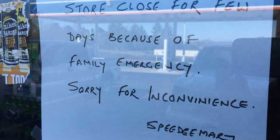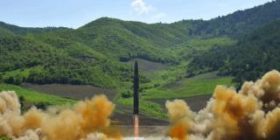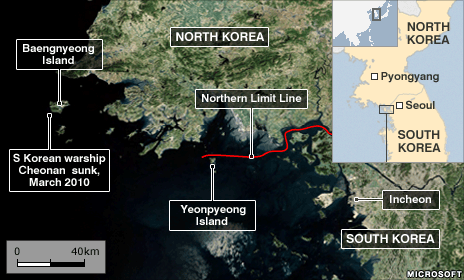“I will never apologize for the United States. Ever. I don’t care what the facts are.” – Presidential candidate George H.W. Bush in 1988, on the shooting down of Iran Air 655.
Despite the fact that investigation into the downing of Malaysian Airlines Flight 17 has just begun, and that the US has released no concrete evidence, America’s mainstream media machine is in a frenzy to blame Russia for this tragic event. As part of this unrelenting propaganda effort against Russia, comparisons between this shootdown and the 1983 downing of Korea Airlines Flight 007 by a Soviet Su-15 interceptor are being made just about every 30 seconds.
On Friday, for example, the Wall Street Journal directly accused Russian President Vladimir Putin for the attack. The editorial, “The Downing of MH17,” attempted to “connect the dots” between Korean 007 and MH17. Just like Korean Air 007, MH17 was a “moral turning point” in this “post-post Cold War era,” the Journal declared. There are still many unknowns as to what happened to this jetliner. But the one possibility, which has been summarily excluded by American media from even the slightest consideration, is that the US and German-backed regime in Kiev may be responsible.
Now, for those who simply cannot imagine that the US government itself is capable of such horrendous action against innocent civilians, take a stroll with me down memory lane to the 1988 shootdown of Iran Air Flight 655 by a US Navy ship. On July 3, 1988, the Iran-Iraq War was winding down after eight years of brutal fighting. The USS Vincennes, a Ticonderoga class cruiser, was patrolling the Strait of Hormuz as part of a larger US mission to escort commercial shipping in the Persian Gulf – mainly oil tankers. Throughout the war, the US had been a staunch supporter of Iraqi President Saddam Hussein against the Islamic Republic of Iran led by the Ayatollah Khomeini. That is, the US had provided vast amounts of money, weapons, and strategic military intelligence to the Iraqis.
About 40 minutes before Flight 655 was blown out of a crystal-clear, mid-morning sky, one of the Vincennes-based helicopters came under warning fire from Iranian gunboats. The helicopter was on a surveillance mission and was illegally within both Iranian airspace and territorial waters. The Vincennes got after the gunboats for firing in the direction of its chopper. It, too, illegally entered Iranian territorial waters.
The US later said that the ship’s crew then detected a plane which was squawking as a military aircraft, and that it was rapidly descending towards their ship. It was these signals and the plane’s trajectory, said the US, which resulted in the crew mistaking the large and lumbering Airbus A300 for a much smaller, sleeker, F-14 Tomcat fighter. Only two countries in the world operated the F-14, the US and Iran—leftover from the days of the Shah.
The Vincennes did try to warn the plane off, but only on military channels. However, since it was a civilian aircraft, Flight 655 could not respond to such warnings.
When the giant airbus was 12.5 miles from the cruiser (within sight by the naked eye and certainly with binoculars), the ship fired two heat-seeking SM-2MR SAM (surface-to-air) missiles blowing it out of the sky and killing all 290 passengers and crew. President Ronald Reagan almost immediately called the shooting down of Flight 655 a “proper defensive action.” And, Admiral William J. Crowe, Jr., then the Chairman of the Joint Chiefs of Staff, said that the captain of the ship had “sufficient reasons to believe their units were in jeopardy and they fired in self-defense.”
Later, every one of the US government’s claims about the attack were revealed to be false.
•Flight 655 was transmitting signals clearly identified as civilian – not military;
•Rather than descending in an attack mode, it was ascending away from the Vincennes;
•The US initially denied that either its helicopter or the Vincennes had breached Iranian territorial waters. The ship and helicopter revealed that both were well inside Iranian waters.
Although the Pentagon eventually came around to blaming “human error” for the attack, no one on board the ship nor anywhere else in US Navy, the Pentagon or US government was ever disciplined, reprimanded, suspended or even given a good talking to, for this “unspeakable” act.
On the contrary, in 1990, the commanding officer of the Vincennes who ultimately gave the shootdown order, William C. Rogers, III, was awarded the Legion of Merit medal by President George H.W. Bush for “exceptionally meritorious conduct in the performance of outstanding services and achievements. The US government also tried to claim a kind of mass hypnosis on the part of the Vincennes’ 18-man bridge crew. That is, they experienced “scenario fulfillment,” a collective psychological condition that somehow led them to shoot down the civilian aircraft. Or, in today’s parlance, the “fog of war.”
As stated, none of the stated reasons (excuses) by the US for shooting down a fully loaded civilian airbus jetliner have held up over the years. This was obviously a deliberate action taken by the US military to force the Iranian government to accede to US-dictated terms with Iraq during the “negotiations” to end to the bloody Iran-Iraq War. It worked. Seventeen days following the cold-blooded downing of Iran Air Flight 655, Ayatollah Khomeini accepted a UN-US-brokered deal that he had previously vehemently opposed.
Rather than the “fog of war,” the International Court of Justice in 1990 concluded that the eagerness of the US Navy and the crew of the Vincennes to test their shiny new state-of-the-art weapons systems in live-fire action also contributed to the shooting down of Flight 655. Iran charged the US with violating international law and demanded full reparations from the US government.
In 1996, the US eventually paid Iran $61.8 million – about $213,000 to each victim’s family.
But to this day, the United States government has never admitted responsibility for the shooting down of this civilian airliner; nor has it ever officially apologized to the Iranian people for the incident.





Leave a reply